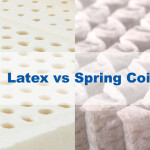The Latest Treatments for Obstructive Sleep Apnea
Obstructive sleep apnea (OSA) affects millions of American adults, and the prevalence of the disorder has been growing over the last few decades. Positive airway pressure therapy can improve symptoms greatly, but the treatment isn’t the right fit for all patients. Alternative routes to improving OSA are being explored all the time—here’s a recap of the available therapies, including the latest arrivals.
Latest Treatments for OSA
Hypoglossus Nerve Stimulation
A relatively new advancement (approved by the FDA in 2014), hypoglossus nerve stimulation (HNS) is an entirely different approach to treating OSA. With HNS, a small device is surgically implanted in the chest, and can be turned on and off by the patient. While you sleep, the device monitors your breathing and stimulates a nerve that keeps the upper airway open. Initial research has shown that HGS improved patients’ sleep apnea symptoms, and had few side effects and good compliance. Doctors may recommend this therapy for patients with moderate to severe obstructive sleep apnea who are not helped by PAP therapy.
Expiratory Positive Airway Pressure (EPAP)
The EPAP system uses disposable adhesive valves that are placed over the nose when you sleep. When you inhale, the valve opens and helps the airway remain unobstructed. When you exhale, the airflow is directed into small channels, which creates pressure and, again, keeps the airways open. Open airways mean fewer incidences of obstructed breathing and interruptions in sleep. Initial research has shown EPAP therapy has a high level of adherence—a good sign for successful OSA treatment.
Standard treatments for OSA:
Positive Airway Pressure Therapy
Positive airway pressure (PAP) therapy is the most common form of treatment for moderate and severe obstructive sleep apnea. To use the PAP system, the patient wears a nasal or full-face mask that delivers pressurized air to the upper airway, preventing the airway from collapsing during sleep. There are variations in how and at what level the pressure is delivered, including continuous, bilevel, and autotitrated systems.
Oral Pressure Therapy
Oral pressure therapy does not use a mask. A mouthpiece is fitted to the patient with tubing and a small vacuum console. During sleep, the light vacuum repositions the tongue and soft palate and keeps the airway open. OPT is a proprietorial treatment for OSA.
Oral Appliances
These devices look like a mouth guard and are worn during sleep. Oral appliances move the tongue and lower jaw forward and upward to increase the size of the upper airway and help you breath. Oral appliances are fitted by dentists who are trained in sleep medicine. They can be used for patients with any severity level of OSA. Most commonly they are used to help patients who snore, those with mild to moderate OSA, and those for whom PAP therapy has been unsuccessful.
Surgery
Surgery can be indicated if you have facial abnormalities that contribute to OSA. Whether surgery is a good choice depends on what the anatomy of each person’s upper airway and the type of surgery performed. For severely overweight or obese patients, bariatric surgery may be considered as part of the treatment strategy for weight loss, which is tied to OSA symptoms.
Behavioral Treatments
For milder forms of OSA, changes to your lifestyle and sleep habits can help. For example, losing weight is known to improve OSA, as is limiting the consumption of alcohol and sedatives. If you only experience OSA when sleeping on your back, there are positioners that will help maintain a side sleeping position, to improve your breathing and promote continuous, healthy sleep.
The right head support can greatly improve how comfortable you feel in bed.Learn more about how these medical devices can make a big difference in nighttime comfort for people with breathing issues.Sleep Apnea is a sleep disorder in which breathing is briefly and repeatedly interrupted during sleep. Learn how to cope...A frequent need to get up and go to the bathroom to urinate at night is called nocturia. It differs...Nearly one-quarter of all workers have shifts that are not during the daytime, and more than two-thirds of these workers...The Electronics and Sleep infographic highlights how technology affects the modern family and how parents can help design a sleep...Orexin receptor antagonists: A new class of sleeping pill Find out more about orexin, and a new type of sleep...Great news: more than three-fourths (76%) of those surveyed say that they had a good night’s sleep at least a...How you feel about the sleep you get every night is known as sleep satisfaction. Unlike sleep quantity (which objectively...Of the approximately 90 million American adults who occasionally experience snoring, many think of it as simply an annoyance, or...

Source: Internet





